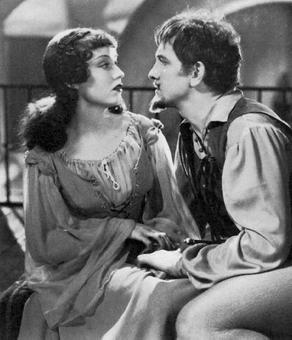
The Affairs of Cellini is a 1934 American historical comedy film directed by Gregory La Cava and starring Frank Morgan, Constance Bennett, Fredric March, Fay Wray, and Louis Calhern. It is set in Florence. The film was adapted by Bess Meredyth from the play The Firebrand of Florence by Edwin Justus Mayer.

Benvenuto Cellini was an Italian goldsmith, sculptor, and author. His best-known extant works include the Cellini Salt Cellar, the sculpture of Perseus with the Head of Medusa, and his autobiography, which has been described as "one of the most important documents of the 16th century".

Benvenuto Cellini is an opera semiseria in four tableaux by Hector Berlioz, his first full-length work for the stage. Premiered at the Académie Royale de Musique on 10 September 1838, it is a setting of a libretto by Léon de Wailly and Henri Auguste Barbier, who invented most of the plot inspired by the memoirs of the Florentine sculptor Benvenuto Cellini. The opera is technically challenging and was until the 21st century rarely performed. But its overture sometimes features in orchestral concerts, as does the concert overture Le carnaval romain which Berlioz composed from material in the opera.

The Accademia di Belle Arti di Firenze is an instructional art academy in Florence, in Tuscany, in central Italy.
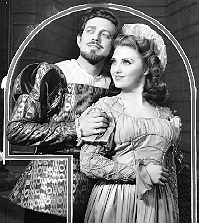
The Firebrand of Florence is a Broadway operetta in two acts, written by Kurt Weill (music), Ira Gershwin (lyrics), and Edwin Justus Mayer and Gershwin (book), based on Mayer's play. The show opened at the Alvin Theatre on March 22, 1945, and closed on April 28 that year after 43 performances. The original production was directed by John Murray Anderson, choreographed by Catherine Littlefield, and conducted by Maurice Abravanel; it featured Lotte Lenya as Duchess.

The Loggia dei Lanzi, also called the Loggia della Signoria, is a building on a corner of the Piazza della Signoria in Florence, Italy, adjoining the Uffizi Gallery. It consists of wide arches open to the street. The arches rest on clustered pilasters with Corinthian capitals. The wide arches appealed so much to the Florentines that Michelangelo proposed that they should be continued all around the Piazza della Signoria.

The Cellini Salt Cellar is a part-enamelled gold table sculpture by Benvenuto Cellini (c.1500-1571). It was completed in 1543 for Francis I of France (r.1515-1547), from silver plate models that had been prepared many years earlier for Cardinal Ippolito d'Este (c.1479-1520).
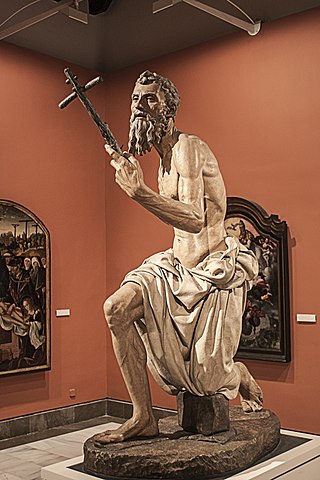
Pietro Torrigiano was an Italian Renaissance sculptor from Florence, who had to flee the city after breaking Michelangelo's nose. He then worked abroad, and died in prison in Spain. He was important in introducing Renaissance art to England, but his career was adversely affected by his violent temperament.

Hercules and Cacus is an Italian Renaissance sculpture in marble to the right of the entrance of the Palazzo Vecchio in the Piazza della Signoria, Florence, Italy.
Cellini is a 2001 play by American playwright John Patrick Shanley. It is based on the process that the sculptor Benvenuto Cellini went through in order to create his mid-16th century work Perseus with the Head of Medusa.
Events from the year 1543 in art.

French composer Hector Berlioz wrote a number of "overtures", many of which have become popular concert works. They include true overtures, intended to introduce operas, but also independent concert overtures that are in effect the first orchestral tone poems.

Gregory Kunde is an American operatic tenor particularly associated with the French and Italian repertoires.

Ascanio is a grand opera in five acts and seven tableaux by composer Camille Saint-Saëns. The opera's French libretto, by Louis Gallet, is based on the 1852 play Benvenuto Cellini by French playwright Paul Meurice which was in turn based on the 1843 historical novel by Alexandre Dumas, père. The name was changed to Ascanio to avoid confusion with the Berlioz opera Benvenuto Cellini. The opera premiered on March 21, 1890, at the Académie Nationale de Musique in Paris, in costumes designed by Charles Bianchini and sets by Jean-Baptiste Lavastre and Eugène Carpezat, Auguste Alfred Rubé and Philippe Chaperon and Marcel Jambon.
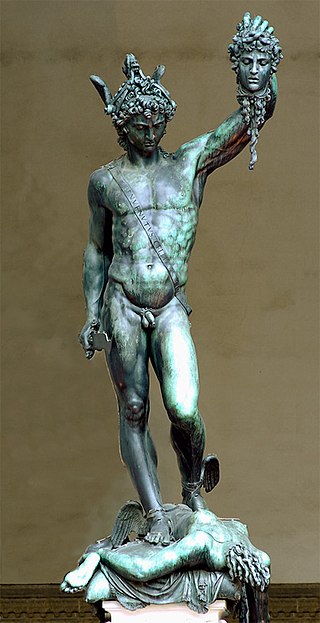
Perseus with the Head of Medusa is a bronze sculpture made by Benvenuto Cellini in the period 1545–1554. The sculpture stands on a square base which has bronze relief panels depicting the story of Perseus and Andromeda, similar to a predella on an altarpiece. It is located in the Loggia dei Lanzi in the Piazza della Signoria in Florence, Italy. The second Florentine duke, Cosimo I de' Medici, commissioned the work with specific political connections to the other sculptural works in the piazza. When the piece was revealed to the public on 27 April 1554, Michelangelo's David, Bandinelli's Hercules and Cacus, and Donatello's Judith and Holofernes were already installed in the piazza.
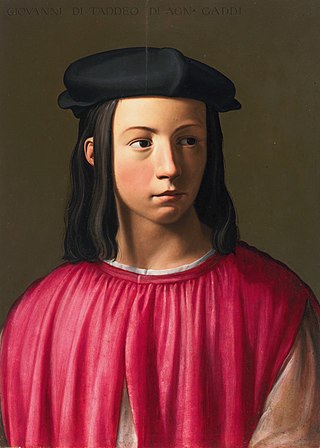
Monsignor Giovanni Gaddi or Giovanni di Taddeo di Agnolo Gaddi was an Italian cleric, descending from the noted Gaddi family of bankers and painters. His parents were Taddeo di Agnolo Gaddi and Antonia di Bindo Altoviti. His brother was cardinal Niccolò Gaddi and his nephew cardinal Taddeo Gaddi.
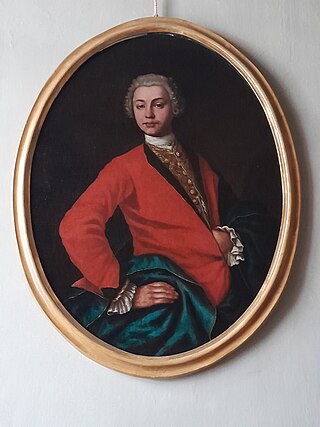
Francesco Maria Tassi was an Italian art historian whose book, Lives of the Painters, Sculptors, and Architects of Bergamo, published posthumously in 1793, provided important biographical information on artists such as Lorenzo Lotto, Fra Galgario, Giovanni Battista Tiepolo, and Francesco Zuccarelli. His account of contemporaries was often enlivened by first-hand knowledge, for example with Tiepolo and Zuccarelli, who at times visited Tassi at the family estate of Villa dei Tasso alla Celadina, in Bergamo. Tassi also edited a compilation of writings by Benvenuto Cellini which appeared in print in 1829.

The Magnificent Adventurer is a 1963 adventure film directed by Riccardo Freda. It is loosely based on real life events of Benvenuto Cellini.
This is a list of Italian television related events from 1990.
There are several portraits of the Italian goldsmith and sculptor Benvenuto Cellini (1500–1570). Including self-portraits and portraits of him by other artists. Benvenuto Cellini's physical appearance is determined based on a number of his lifetime portraits. However, due to a few known portraits from the 17th – 20th century, where the artists drew Cellini's facial traits from their imagination, as well as because of past posthumous erroneous attributions, there is a level of confusion on this subject.
















